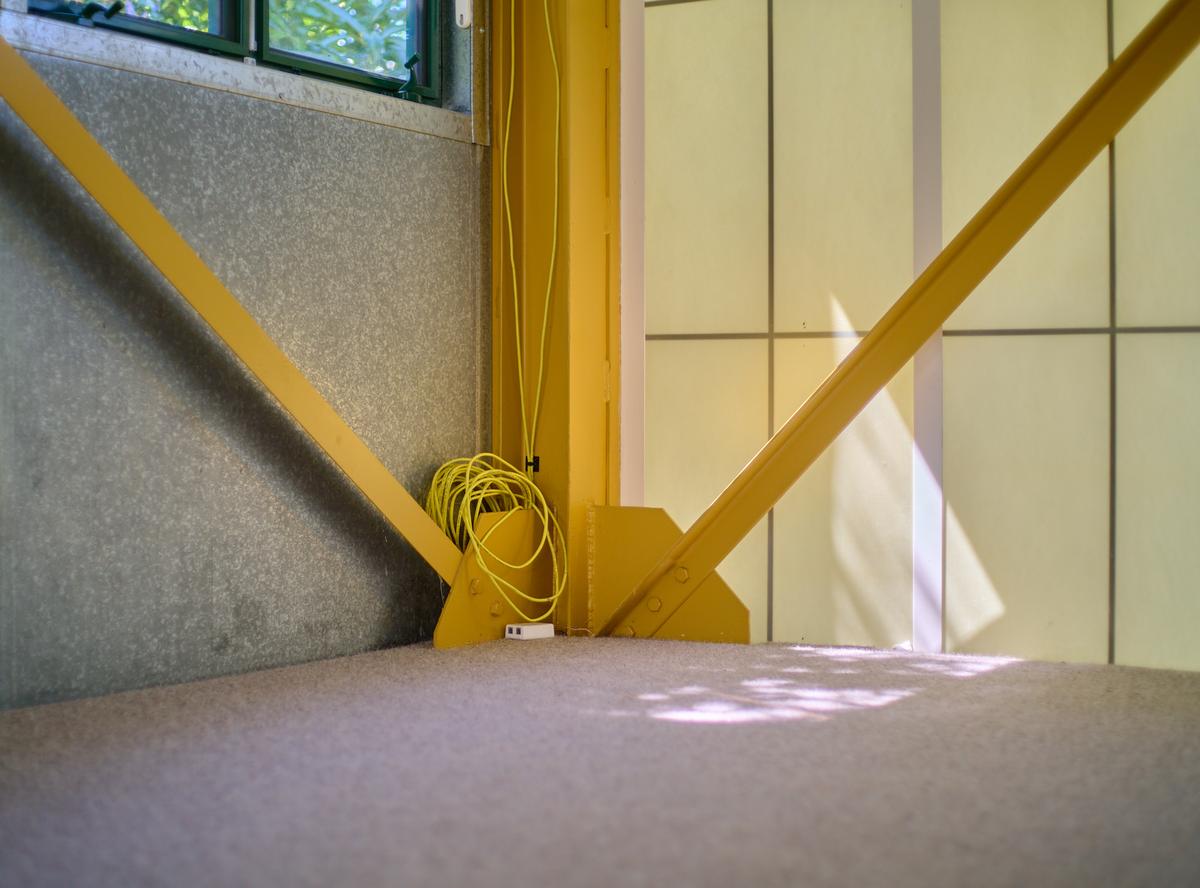Field Trip: “Glacial Fanfare” — Duffy x Uhlmann at the Earthquake House
Today we’re excited to release the first video in a new series we’re calling Field Trip: videos of great musicians performing in interesting spaces. And we’re starting off with one of my favorite current acts, Duffy x Uhlmann, performing a track from their 2023 album, Doubles, in an incredible house on the westside of Los Angeles — David Ming-Li Lowe’s Earthquake House (1990) — using nothing but two guitars, two amps, and two Chase Bliss Goodhertz Lossy pedals.
Some quick notes before we get into a little backstory: the expression pedals you see in the video are controlling the Global knobs of each Lossy. Also, if you love Duffy x Uhlmann’s music as much as I do, you should know they’re about to head out on tour.

I first came across Duffy x Uhlmann’s album algorithmically when “In the Spirit of Fair Play” began to autoplay on my headphones. I must’ve been washing dishes at the time, since I remember taking off my kitchen gloves to find the full album on my phone, at which point I started from the beginning and listened all the way through.
And while listening I began to wonder, are they using Lossy on this? Some of the sounds, particularly on “Etch,” gave me that impression. It turns out they weren’t, but not long after that first listen, I wanted to know what it would sound like if they did have Lossy on their pedalboards, so we sent some Lossy pedals their way.
But when would I get the chance to hear them play through those pedals?

Around that same time I found out about a house currently for sale, David Ming-Li Lowe’s Earthquake House. I really wanted to see it in person, but I had missed the open house.
That’s when it hit me: maybe Goodhertz could make a video of Duffy x Uhlmann playing guitar through Lossy pedals at the Earthquake House?
Next thing I knew — with the gracious permission of the current owner and the assistance of their listing agent, Christina Hildebrand — we were standing in the great room of the Earthquake House, setting up cameras and microphones and guitars.

And as I wandered around the house snapping photos of the fabulous inside-out house and its exposed steel framing and plumbing and galvanized refrigerator panelling, Duffy x Uhlmann began to fill the house with sounds to match: music similarly turned inside-out — open chords morphing beautifully via Lossy-connected expression pedal into harsh sounds as angular as the tower at the top of the central staircase.

The architect David Ming-Li Lowe and his work are not very well-known today, but the buildings he left behind — usually ones he owned and built himself — are a unique part of the Los Angeles landscape, and emblematic of a particular moment in experimental residential architecture in the 1980s and 1990s.
In 1984 he was featured, alongside more well-known westside architects like Morphosis and Frank Gehry, in an eccentric little book entitled Real Estate as Art: New Architecture in Venice, written by Joseph Giovannini. I recently got a copy from the Los Angeles Public Library and thoroughly enjoyed its slice-of-life approach to the architectural scene of Venice, California in the 1980s.
There Lowe is profiled as “Venice’s long-established incognito architect,” and quoted as saying, simply, “I love steel.”

But by 1990 he had left Venice for Sawtelle, a neighborhood just to the north and slightly inland, where he built, on a single lot, a pair of houses whose structures rest on base-isolating dampers, meant to reduce shaking during earthquake events.
The back house, 1955 1/2 Purdue Ave., was his personal residence and — for a time — his office as well. (That’s the one we know today as The Earthquake House.)

In 1994 the house did experience a major temblor — the Northridge Earthquake — and received quite a bit of press in Los Angeles papers and, eventually, around the country, since the story had a catchy hook, widely quoted: “I’m probably one of the few people who was looking forward to an earthquake,” said architect David Ming-Li Lowe.

I have to admit the dampers are not particularly interesting to me; of much more interest are the ways the house connects to the history of architecture in Los Angeles and beyond — the playful yellow steel structure that evokes the Eames House, as well as the use of translucent fiberglass-and-plastic wall panels to let in the kind of soft light that paper screens once let into traditional Japanese homes of the 17th century.

You can read more about the Earthquake House and see more photos on my architecture blog at othermodern.com/earthquake-house.



Technical notes
Audio recording was performed by a RME UCX II using DURec straight to SD card (no laptop required!). An external mic preamp was used for the 6 channels of mics recorded (Soyuz 013’s [close pair], KSM141’s [far pair in an adjacent room], and Sennheiser MD421 / Shure SM81 [amp mics]). When needed, the entire audio recording setup can be battery powered (though not necessary at the Earthquake House).
To keep the cabling simple, we used a SoundTools SuperCAT cable, which is essentially a 4-channel analog snake where the length of CAT cable can be swapped out as needed. For monitoring headphones, we tested out some Sennheiser HD300 Pro’s, which are perfect for a moderately loud tracking situation.
Video recording was performed on a BMPCC 6k with a Laowa 12mm f/2.8, a BMPCC 4k with a Laowa 9mm f/2.8, and Sony A7sii with a Rokinon 85mm T1.5.
